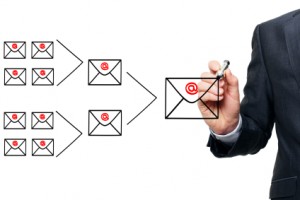 Subject lines, why do we neglect you so? You are the number 2 reason someone decides to open an email from us marketers. You’re important but oh so overlooked as we busily focus on offers and lists and timing of our campaigns.
Subject lines, why do we neglect you so? You are the number 2 reason someone decides to open an email from us marketers. You’re important but oh so overlooked as we busily focus on offers and lists and timing of our campaigns.
Are you guilty of skipping over the subject line? Many marketers are. This critical part of your email marketing is often the last to be tackled, and the most likely to be rushed. And that’s a big mistake because subject lines can have a big impact on your results.
If subject line best practices aren’t getting the attention they deserve around your office, here are three good reasons to take another look at your approach…and get optimizing.
Reason 1: Automated inboxes
George Bilbrey spells out what marketers need to know about the inbox within the inbox in a recent Email Insider article. His article on the automated inbox reiterates the importance of engagement and campaign timing for making it into that priority inbox, and states that subject line optimization will become even more critical for those emails that don’t make into the inbox within the inbox.
That’s because presumably consumers will pay the most attention to the emails in their priority inboxes, and the least to any others. Some marketers will find themselves happily ensconced in those priority inboxes because they’ve done the work necessary to be relevant and engaging enough that the subscriber’s activity indicates to the email client that yes, emails from this sender are important and belong in the higher value inbox.
For those marketers who don’t make it into the inbox within the inbox, competition for attention in the “rest of” inbox will be that much stiffer as the priority inbox takes, well, priority.
If that’s where you’ll find your brand–and chances are good that is where you’ll find your brand–your subject lines must work that much harder to get noticed and reacted to.
Reason 2: Mobile marketing
Even if you aren’t worried about subject line best practices for the sake of competing in the world of priority inboxes, you’d better be for the sake of competing on mobile. With over half of Americans checking email on a mobile device, the time to optimize for mobile has come. And that means optimizing your subject lines for email too.
For the sake of brevity on a tiny screen, some experts advise you limit your subject line to less than 15 characters with the most intriguing words first. To do that, just drop the formalities, introductions or warmups. For example, instead of “For 2 days only, save 15%” where only the “For 2 days only” might show, try switching the words so the first words in the subject line are the offer: “Save 15% for 2 days only.” You’d have your offer upfront and enough of an intrigue with the “2” to increase opens.
Reason 3: Open rates
Further proof of the importance of subject lines even beyond priority inboxes and mobile devices comes from a Listrak study that first off proves email remains an extremely effective marketing channel, with 97 percent of Americans getting emails from retailers and 83% of those Americans opening them. Dig deeper into the study and you’ll see subject lines play a key role in these open rates. The study says 53% of the people who open the emails from retailers do so because the subject line showcases a special offer and 47% because the subject line says the email is an order confirmation. Would you like to improve your open rate? Improve your subject lines.
The only way to know is to test
Will a first name in a subject line improve opens? Should my subject line be longer? Which performs better as a subject line, a percentage-based offer or a dollar-based one? The only one who knows the answer to these types of questions is…your subscriber! And that’s why you test, to determine the subject line your subscribers will react to best. Will using a first name improve your open rate? Do an A/B test and see. Does a shorter subject line perform better than a longer one? Find out.
Testing is the only way to optimize your subject lines because it’s the only way to know which kind of subject line performs better for your brand.
To do a simple A/B split test, divide your list into two groups. One is A and one is B. Now change only one thing about the emails between them. Write two different subject lines with only one variable between them. Then send out your emails to both groups at the same time (to avoid the time variable). Compare your results and make your deductions. (You can learn more about doing A/B split tests here.)
Are you seeing subject lines in a different light now?



